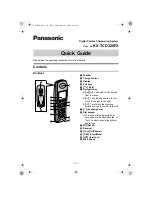
56
Smocking
q
Stitch pattern:
32
w
Thread tension dial: 3 to 6
e
Presser foot:
Satin stitch foot F
* The stitch patterns 14 and 33 can also be used.
4
q
w
e
q
w
e
Smocking is a delicate decorative treatment used on
children’s clothes or women’s blouses.
Use a soft and lightweight fabric such as batiste, gingham
or challis.
Cut the fabric three times wider than the projected width.
Select straight stitch, set stitch length at “5.0” and loosen
the thread tension.
Sew rows of straight stitches 1 cm (3/8˝) apart across the
area to be smocked. Knot the threads along one edge.
From the other edge, pull the bobbin threads to distribute
the gathers evenly.
q
1 cm (3/8˝)
w
Knotted thread
Set the thread tension to 3–6 and select a smocking
stitch pattern.
Sew the smocking stitch pattern between the rows of
straight stitches.
Remove the straight stitches by pulling them out.
e
Straight stitch
NOTE:
Pull up the bobbin thread and draw a 4˝(10 cm) thread
tail to the back before starting to sew.
Use the thread cutter on the face cover when cutting
the threads (refer to page 26).
Summary of Contents for Sewist 740DC
Page 1: ...Instruction Book Sewist 740DC ...
Page 2: ......
Page 12: ...10 r Needle up down button Press the needle up down button to bring the needle up or down r ...
Page 65: ...63 Stitch Chart ...
Page 67: ......
Page 68: ...814 800 005 EN ...











































